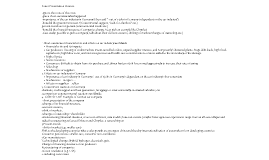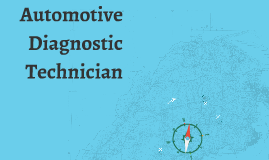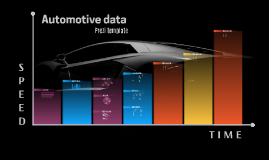Automotive
Transcript: Notes Presentation Finance -ignore the roots of the crisis -give a short overview what happened -importance of the car industry in Germany (Elsen said ”1 out of 7 jobs in Germany is dependent on the car industry”) -how did the government react ? (Governmental support, “cash-for-clunkers” etc.) present trends are important (environmental trends etc.) -how did the financial structure of companies change ? (e.g. pick an example like Chrysler) -Case study: possible to pick a company, talk about their current scenario, shifting of markets/changes of ownership etc.) 1. Short overview of financial crisis and effects on car industry worldwide Financial crisis and its impacts Car producers: freezing of credit markets meant cancelled orders, unpaid supplier invoices, and ‘temporarily’ shuttered plants. Huge debt loads, high fixed-capital costs, high labor costs, and immense pension and health care commitments to retirees added to the immediacy of the damage High oil price Scarce resources Consumers: difficult to obtain loans for purchase and, driven by fear of job loss, moved aggressively to increase their rate of saving Sales drop Insolvencies of suppliers 2. Effects on car industry in Germany Importance of car industry in Germany (1 out of 7 jobs in Germany is dependent on the car industry) short overview Insolvencies + mergers … Effects on suppliers + sellers 3. Government reactions in Germany obailouts, credit support and loan guarantees, Scrappage or environmentally-motivated subsidies, etc ocomparison to governmental reactions worldwide 4. CASE STUDY: Example of German car company - short presentation of the company ochange of its financial structure, ocurrent scenario, oshift of markets, ochanges of ownership / shareholder oRestructuring (financial situation, more cost-efficient, new models, low-cost carsetc.) maybe: heterogeneous experiences range from an all-out collapse and radical restructuring at General Motors and Chrysler, a retrenching on 5.Present trends - shift of market (e.g. smaller cars) Shift to the developing countries where sales growth are strongest china and thereby internationalization of automakers from developing countries Consumer preferences smaller cars, consumer non-confidence oCar manufacturers Technological changes (hybrid, hydrogen, electricals, gas), Change of financing structure of car producers Restructuring of companies oGreen revolution (e.g. USA) o including some ratios

















